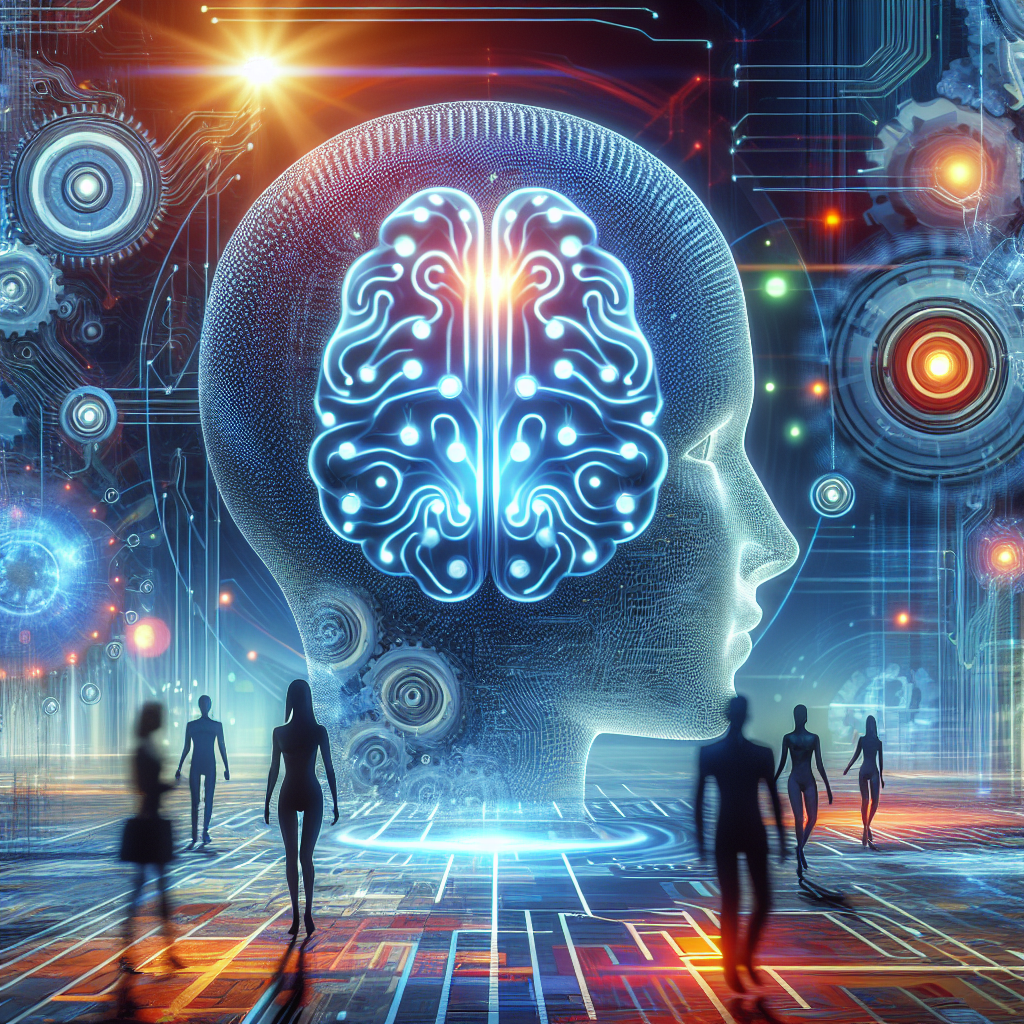Creativity has always been a fundamental aspect of human civilization, driving innovation, progress, and artistic expression. From the great works of art and literature to groundbreaking technological advancements, creativity has played a crucial role in shaping the world as we know it. However, with the rise of artificial intelligence (AI), there are growing concerns about how this technology will impact the future of creativity.
AI has already made significant advancements in various fields, from healthcare to finance to transportation. Its ability to analyze vast amounts of data, recognize patterns, and make predictions has revolutionized many industries. In the realm of creativity, AI is also starting to make its mark. AI algorithms can now compose music, write poetry, create visual art, and even design buildings. This raises questions about the future of creativity and the role of AI in shaping it.
One of the key debates surrounding AI and creativity is whether AI can truly be creative. Some argue that creativity is a uniquely human trait that involves complex processes like intuition, emotion, and personal experiences. They believe that AI, being a machine, lacks the capacity for true creativity. On the other hand, proponents of AI creativity argue that creativity is essentially about generating novel and valuable ideas, and that AI can certainly achieve this through its computational power.
Regardless of where one stands on this debate, it is clear that AI is already impacting creativity in various ways. For example, AI can assist artists and designers in generating ideas, exploring new possibilities, and enhancing their creative processes. AI tools like generative design software can help architects and engineers create innovative designs that are both aesthetically pleasing and structurally sound. AI algorithms can also analyze large datasets of music or literature to identify trends and patterns that can inspire new creative works.
AI is also changing the way we consume and interact with creative content. Streaming platforms like Netflix and Spotify use AI algorithms to recommend movies, TV shows, and music based on users’ preferences and viewing habits. This personalized content delivery has revolutionized the entertainment industry, making it easier for users to discover new artists and genres that they might not have encountered otherwise.
In the field of marketing and advertising, AI is being used to create targeted and engaging campaigns that resonate with consumers. By analyzing consumer data and behavior, AI algorithms can predict which ads are most likely to be effective and optimize their content accordingly. This has led to more personalized and relevant advertising messages that can drive higher engagement and conversions.
Despite the potential benefits of AI in creativity, there are also concerns about its impact on jobs and the workforce. As AI technologies become more sophisticated, there is a fear that they could replace human workers in creative industries. For example, AI-generated music or art could potentially compete with human creators, leading to a decline in demand for their services. This raises questions about how society should adapt to these changes and ensure that the benefits of AI are shared equitably.
To address these concerns, some experts advocate for a collaborative approach to AI and creativity. They argue that AI should be seen as a tool to augment human creativity rather than replace it. By harnessing the power of AI to assist in the creative process, artists, designers, and other creative professionals can explore new ideas, push boundaries, and unleash their full potential. This collaborative model can lead to a symbiotic relationship between humans and machines, where each can leverage their unique strengths to create innovative and impactful works.
In conclusion, the future of creativity is undoubtedly intertwined with the rise of AI. While there are debates about whether AI can truly be creative, there is no denying that AI is already impacting creativity in significant ways. From assisting artists and designers in generating ideas to transforming how we consume and interact with creative content, AI is reshaping the creative landscape. As we navigate this new era of AI-driven creativity, it is essential to embrace collaboration, innovation, and adaptability to ensure that the benefits of AI are harnessed for the betterment of society.
FAQs:
1. Can AI truly be creative?
While there is still debate about whether AI can exhibit true creativity in the way humans do, AI algorithms have demonstrated the ability to generate novel and valuable ideas. Whether this qualifies as creativity in the traditional sense is up for interpretation, but AI certainly has the potential to enhance and augment human creativity.
2. Will AI replace human creators in creative industries?
While there is a fear that AI technologies could replace human workers in creative industries, many experts advocate for a collaborative approach where AI serves as a tool to augment human creativity rather than replace it entirely. By leveraging AI to assist in the creative process, human creators can explore new ideas, push boundaries, and unleash their full potential.
3. How is AI impacting the way we consume creative content?
AI algorithms are being used by streaming platforms, marketing agencies, and other industries to personalize and optimize creative content delivery. This has revolutionized the way we discover and interact with movies, music, art, and advertising, leading to more personalized and engaging experiences for consumers.
4. What are the potential benefits of AI in creativity?
AI has the potential to assist artists and designers in generating ideas, exploring new possibilities, and enhancing their creative processes. AI tools like generative design software can help architects and engineers create innovative designs, while AI algorithms can analyze large datasets of music or literature to inspire new creative works. Overall, AI has the potential to unlock new creative possibilities and push the boundaries of traditional creativity.

